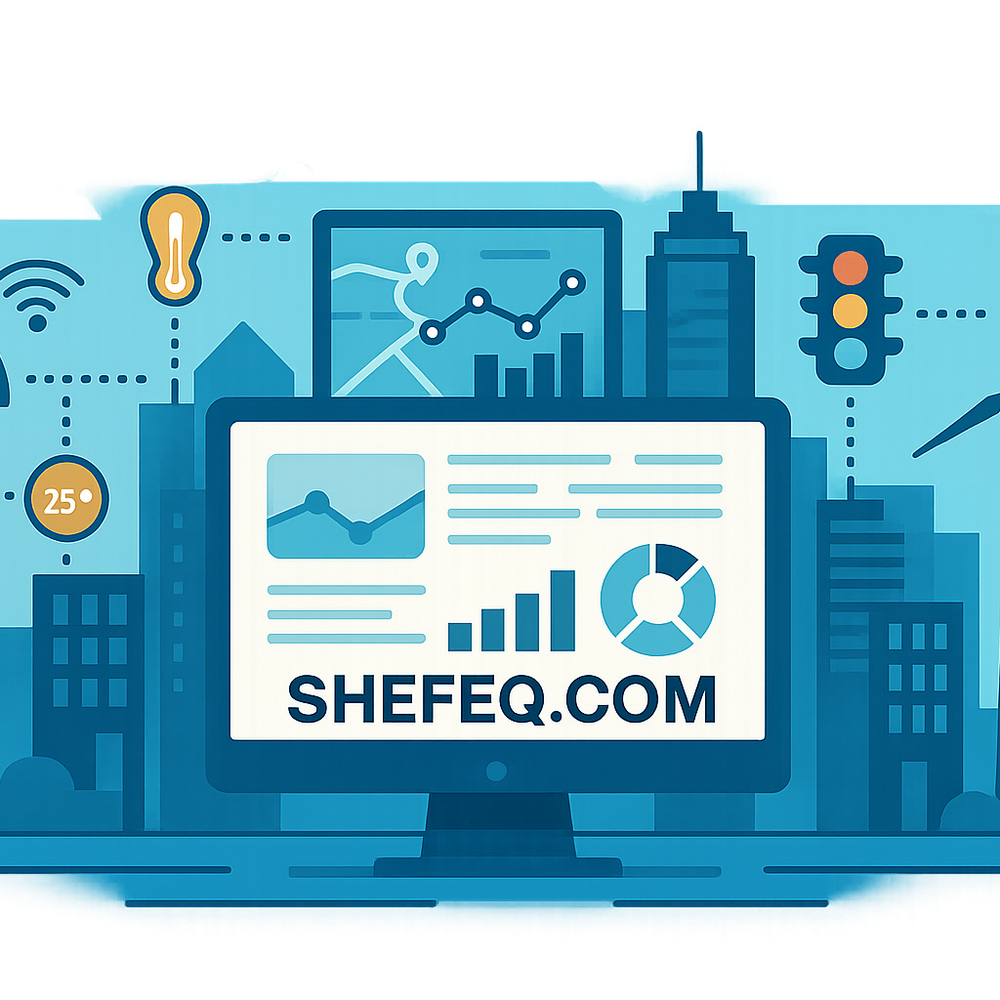INTRODUCTION
Every era has expressed humanity’s emotions, fears, and hopes through the form of its cities. From the clay houses of ancient Sumer to the aqueducts of the Roman Empire, from medieval fortresses to the steam trains of the 19th century, cities have constantly evolved. The 21st century marks the peak of this transformation. We are now entering a new urban reality called “smart cities,” built upon technology and the Internet of Things (IoT).
This article explores the structure, benefits, challenges, and ethics of smart cities, offering a vision of the city model of the future. The concept of a smart city is not merely the accumulation of technologies — it is the harmonious integration of people, the environment, and resources.
I. WHAT IS A SMART CITY?
A smart city is an urban space that uses technology, software systems, and real-time data to efficiently manage city resources. The concept is based on technological systems in areas such as public transportation, energy usage, water supply, waste management, and public safety.
At the core of this system are IoT devices, sensors, Big Data, artificial intelligence (AI), and cloud technologies. The goal is to create a comfortable, sustainable, and environmentally friendly living environment for the city’s population. At the same time, active citizen participation and access to digital tools are fundamental pillars of this model.
II. TECHNOLOGICAL STRUCTURE: WHAT DOES IT INCLUDE?
-
Sensor-based networks – systems that measure various indicators such as movement, temperature, air quality, noise levels, and lighting.
-
Artificial intelligence – for traffic management, crime prediction, and energy consumption regulation.
-
Cloud infrastructure – servers for storing, processing, and quickly analyzing large data sets.
-
Automated control systems – real-time monitoring of water supply, waste collection, and utility services.
-
Mobile apps and city dashboards – digital panels that help citizens make informed decisions. Through these dashboards, city officials and residents can visually monitor resource usage, emergencies, and access to services.
III. REAL-WORLD EXAMPLES: PIONEERING SMART CITIES
-
Songdo, South Korea – a city built from scratch with fully integrated smart infrastructure. Every building is equipped with sensors.
-
Barcelona, Spain – became a global model with its smart water network, intelligent lighting, and inner-city mobile apps.
-
Amsterdam, Netherlands – known for its open access to public data and smart energy initiatives.
-
Dubai, UAE – realizes the vision of a futuristic city with robot police, AI-based services, and digital municipal systems.
IV. BENEFITS: WHY ARE SMART CITIES VALUABLE?
-
Resource efficiency – more efficient use of energy and water.
-
Safety – predicting and preventing incidents using camera and sensor networks.
-
Equal opportunities – more accessible services for people with disabilities and the elderly.
-
Environmental protection – proper waste management and air pollution control.
-
Comfortable living – reduced traffic congestion, accessible services through mobile apps, and rapid response systems.
V. ETHICAL AND SOCIAL QUESTIONS
Implementing smart cities raises not only technological, but also ethical and social issues:
-
Privacy – who collects data about citizens’ movements and habits, and how is it used?
-
Digital divide – will those without access to digital technologies be left behind?
-
Reliability and security – how can systems remain resistant to cyber threats and ensure uninterrupted functionality?
These questions must be addressed to ensure that smart cities remain human-centered.
VI. LOOKING AHEAD: WHAT WILL CHANGE?
In the future, smart cities will evolve further with the help of technological revolutions such as:
-
Autonomous vehicles – transportation systems that reduce congestion by operating without human input.
-
Blockchain-based governance – transparent and tamper-proof administrative systems.
-
Robot municipalities – AI and robots making decisions in certain administrative processes.
-
Climate-responsive architecture – building structures that adapt to light and weather conditions.
-
Zero-carbon strategies – ecological models that minimize carbon emissions.
CONCLUSION
Smart cities should not be victims of technology, but rather spaces where technology serves humanity. These cities must be sustainable not only in technical terms but also socially and ethically.
The cities of the future could be places with clean air, peaceful sounds, citizen participation, and technologies that serve people. But to achieve this future, we must ask ourselves:
"Technology may make a city smarter — but does it make its people smarter too?"
This is not just a technological question, but a philosophical one. If cities are becoming smarter, then humans must accompany that shift in spiritual, social, and moral terms. Because a smart city should consist not only of sensors and systems, but also of people who live with empathy, justice, and compassion.
If cities could speak, would they tell us how they want to govern us?
What would cities of the future look like if they were built not by artificial intelligence, but by human consciousness?

